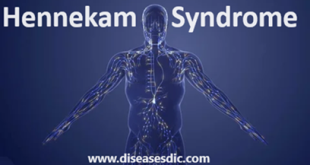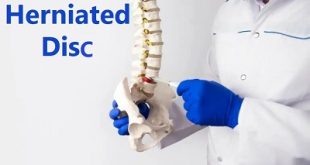What is Hamstring Injury or Strain?
Hamstring injury is the common sports-related problems. A hamstring strain involves an over-stretch or a tear of one or more of the 3 hamstring muscles at the back of the thigh biceps femoris, semimembranosus, and semitendinosus. Strains can vary from a mild tightening of the muscle to a rupture of the muscle. The injury may affect the muscle or the tendon attachment to the bone at the base of the buttock.
Anatomy of the hamstring
Where are the hamstrings, and what do they do?
The hamstrings make up the bulk in back of the thigh. They are formed by three muscles and their tendons. The hamstrings connect to the ischial tuberosity, the small bony projection on the bottom of the pelvis, just below the buttocks. (There is one ischial tuberosity on the left and one on the right.) The hamstring muscles run down the back of the thigh. Their tendons cross the knee joint and connect on each side of the shinbone (tibia).
The hamstrings function by pulling the leg backward and by propelling the body forward while walking or running. This is called hip extension. The hamstrings also bend the knees, a motion called knee flexion. Most hamstring injuries occur in the musculotendinous complex. This is the area where the muscles and tendons join. (Tendons are bands of tissue that connect muscles to bones.) The hamstring has a large musculotendinous complex, which partly explains why hamstring injuries are so common.
When the hamstring is injured, the fibers of the muscles or tendon are actually torn. The body responds to the damage by producing enzymes and other body chemicals at the site of the injury. These chemicals produce the symptoms of swelling and pain. In a severe injury, the small blood vessels in the muscle can be torn as well. This results in bleeding into the muscle tissue. Until these small blood vessels can repair themselves, less blood can flow to the area. With this reduced blood flow, the muscles cannot begin to heal.
The chemicals that are produced and the blood clotting are your body’s way of healing itself. Your body heals the muscle by rebuilding the muscle tissue and by forming scar tissue. Carefully stretching and exercising your injured muscle helps maximize the building of muscle tissue as you heal. In rare cases, an injury can cause the muscle and tendons to tear away from the bone. This happens most often where the hamstring tendons attach to the ischial tuberosity. These tears, called avulsions, sometimes require surgery.
Anatomical representation of hamstring injury location
Types of Hamstring Injury
A hamstring injury is classified as a type 1 or type 2 hamstring strain depending on the mechanism of the injury.
Type 1: Acute hamstring injury are related to sprinting or heavy loading of the hamstring muscles and can be often found during sprinting, hurdling, jumping or kicking. The hamstrings most often become injured during the time right before the foot strikes the ground when an athlete is sprinting. At this stage of the leg swing cycle there is a great amount of force placed on the muscles as they are maximally activated and are approaching their maximum length while working eccentrically to rapidly slow the leg and control knee and foot movement.
Type 2: Acute hamstring injury are considered stretch related injuries that are often seen in dancers or gymnastics. These occur when the muscles are put into excessive stretch positions through hip flexion. These injuries may feel less intense to the athlete than a type 1 strain but they may take longer to heal because of the location and type of injury to the muscle and tendon. These injuries most likely occur in the semimembranosus muscle.
Grades of hamstring injury
An injury of the hamstring muscles is a strain (pull) or tear to one of the above three muscles or their tendons.
There are three grades of injury:
Grade 1: A mild pull or strain that should not interfere with walking but will stop a patient from running at full speed.
Grade 2: A partial muscle tear will cause the patient to limp, there will be swelling and sudden painful twinges.
Grade 3: A complete tear will lead to severe pain to the extent that the patient may need crutches, there will be immediate swelling and bruising evident within 24 hours. This can happen to both amateurs and professionals alike and is common in football, with the following video showing Michael Owen pulling is hamstring mid game and his subsequent reaction.
Risk factors
The below risk factors increase a person’s chance of having a hamstring injury:
- Muscle weakness within the hamstring muscles
- Inadequate warm up and poor stretching before strenuous exercises
- Recurrent injuries even before the injured muscle completely heal from the previous damage
- Muscle weakness between the hamstrings and quadriceps
- Differences in leg length
- An imbalance between the quadriceps (front of the thigh) and hamstring muscles
- Improper or no warm-up before exercise
- Muscle fatigue during activity
- Poor flexibility
- Pushing beyond your current limits
- Tight hip flexors
- Weak gluteus muscles (buttocks)
- Poor footwear
Causes of Hamstring Injury
A hamstring injury generally occurs as a result of muscle overload, such as when you are running and your leg is fully stretched out just before your foot strikes the ground. When your foot strikes the ground and all your weight is on it, the muscles can get stretched too far and they may start to tear.
People who take part in certain activities that involve sprinting or jumping (like track and field, soccer, football, lacrosse, basketball, and dance) are more at risk of getting hamstring strains. These kinds of injuries are also more common in teens who are going through growth spurts. That’s because the leg bones may grow faster than a person’s muscles, pulling the muscles tight and leaving them more susceptible to getting stretched too far.
Some of the more common things that can contribute to a hamstring strain include:
Not warming up properly before exercising: Tight muscles are much more likely to strain than muscles that are kept strong and flexible.
Being out of shape or overdoing it: Weak muscles are less able to handle the stress of exercise, and muscles that are tired lose some of their ability to absorb energy, making them more likely to get injured.
An imbalance in the size of your leg muscles: The quadriceps, the muscles at the front of your legs, is often larger and more powerful than your hamstring muscles. When you do an activity that involves running, the hamstring muscles can get tired more quickly than the quadriceps, putting them at greater risk of a strain.
Poor technique: If you don’t have a good running technique, it can increase the stress on your hamstring muscles.
Returning to activities too quickly after an injury: Hamstring strains need plenty of time and rest to heal completely. Trying to come back from a strain too soon will make you more likely to injure your hamstring again.
Hamstring Injury Symptoms
Mild strains may not hurt too much and tend to be seen more as an annoyance than anything else. Severe ones can be agonizing, making it difficult to walk or even stand.
Signs and symptoms of a hamstring injury include:
- Sudden, sharp pain in the back of your thigh
- A snapping or popping feeling
- Tenderness
- Swelling during the first few hours after injury
- Bruising or discoloration of the back of your leg below the knee over the first few days
Complications
Complications associated with hamstring injury vary, depending on their onset (early or late onset of complications). Some of the common complications include:
Deep vein thrombosis: Damage to the hamstrings muscle owing to trauma may also lead to the formation of a blood clot in the leg. This clot may impede the circulation in the veins supplying lower legs and cause deep vein thrombosis (DVT).
Acute compartment syndrome: Bleeding due to hamstring injury would increase THE pressure in the thigh region thereby compressing the major nerves and blood vessels that pass through the back of the thigh. This is an emergency condition.
Repeated injuries: It is mainly seen in those individuals who have persistent muscle weakness after recovering from a previous hamstrings injury or surgery. It is also common in athletes who return early to sports without complete recovery.
Myositis ossificans: The recovery from a severe hamstring injury may involve the formation of bony tissues in the affected region, this condition is called as myositis ossificans. It is one of the most common complications, in case of hamstring injury.
Diagnosis and test
Your doctor will do several things to determine if you have a hamstring injury. This might include a:
Physical exam: The doctor will check your thigh for swelling, tenderness, and bruising. This helps them decide if your injury is mild or severe.
MRI: If the doctor thinks you have a severe injury, you might get an MRI. This imaging test will show the tear in your muscle tissue.
Ultrasound: An ultrasound is another test that produces a detailed image of your muscles. It can show the size and location of the hamstring tear.
X-ray: You’ll need to get an x-ray if the doctor thinks the bone was fractured during your injury,
Treatment and medications
Treatment of hamstring strains will vary depending on the type of injury you have, its severity, and your own needs and expectations. The goal of any treatment nonsurgical or surgical is to help you return to all the activities you enjoy. Following your doctor’s treatment plan will restore your abilities faster, and help you prevent further problems in the future.
Nonsurgical Treatment
Most hamstring strains heal very well with simple, nonsurgical treatment.
RICE: The RICE protocol is effective for most sports-related injuries. RICE stands for Rest, Ice, Compression, and Elevation.
- Rest: Take a break from the activity that caused the strain. Your doctor may recommend that you use crutches to avoid putting weight on your leg.
- Ice: Use cold packs for 20 minutes at a time, several times a day. Do not apply ice directly to the skin.
- Compression: To prevent additional swelling and blood loss, wear an elastic compression bandage.
- Elevation: To reduce swelling, recline and put your leg up higher than your heart while resting.
Immobilization: Your doctor may recommend you wear a knee splint for a brief time. This will keep your leg in a neutral position to help it heal.
Physical therapy: Once the initial pain and swelling has settled down, physical therapy can begin. Specific exercises can restore range of motion and strength.
Anti-Inflammatory Medications: Anti-inflammatory medications (such as Aleve, Motrin, or ibuprofen) can help relieve pain. These also calm the inflammatory response from the injury
A therapy program focuses first on flexibility. Gentle stretches will improve your range of motion. As healing progresses, strengthening exercises will gradually be added to your program. Your doctor will discuss with you when it is safe to return to sports activity.
Surgical Treatment
Surgery is most often performed for tendon avulsion injuries, where the tendon has pulled completely away from the bone. Tears from the pelvis (proximal tendon avulsions) are more common than tears from the shinbone (distal tendon avulsions). Surgery may also be needed to repair a complete tear within the muscle.
Procedure: To repair a tendon avulsion, your surgeon must pull the hamstring muscle back into place and remove any scar tissue. Then the tendon is reattached to the bone using large stitches or staples.
A complete tear within the muscle is sewn back together using stitches.
Rehabilitation: After surgery, you will need to keep weight off of your leg to protect the repair. In addition to using crutches, you may need a brace that keeps your hamstring in a relaxed position. How long you will need these aids will depend on the type of injury you have.
Your physical therapy program will begin with gentle stretches to improve flexibility and range of motion. Strengthening exercises will gradually be added to your plan. Rehabilitation for a proximal hamstring reattachment typically takes at least 6 months, due to the severity of the injury. Distal hamstring reattachment’s require approximately 3 months of rehabilitation before returning to athletic activities. Your doctor will tell you when it is safe to return to sports.
Prevention of Hamstring Injury
You can decrease your risk of a hamstring strain injury in the following ways:
- Always warm up before participating in athletic activities.
- Avoid starting a new activity too quickly; gradually increase the frequency and intensity of the activity so that your body may adapt to the new movement patterns.
- Maintain the strength of your hamstring muscles.
- Listen to your body after you work out (and stretch, apply ice, rest as needed) prior to engaging in the same routine again.
 Diseases Treatments Dictionary This is complete solution to read all diseases treatments Which covers Prevention, Causes, Symptoms, Medical Terms, Drugs, Prescription, Natural Remedies with cures and Treatments. Most of the common diseases were listed in names, split with categories.
Diseases Treatments Dictionary This is complete solution to read all diseases treatments Which covers Prevention, Causes, Symptoms, Medical Terms, Drugs, Prescription, Natural Remedies with cures and Treatments. Most of the common diseases were listed in names, split with categories.








Can I add Ampiclox and white vitamin C to the medical treatment?
It’s important to note that Ampiclox is an antibiotic, and vitamin C is a supplement. They are not typically used to treat hamstring injuries or strains directly. If you suspect a hamstring injury, it’s recommended to consult with a healthcare professional for an accurate diagnosis and appropriate treatment plan.
Hamstring injuries may involve rest, ice, compression, and elevation (RICE), along with physiotherapy exercises. Pain relief medications or anti-inflammatory drugs prescribed by a healthcare professional may also be considered. Adding medications or supplements without proper guidance can be risky, so it’s essential to follow the advice of a healthcare professional for the most effective and safe treatment.
I am 62 yoa. I do feel pain on my hamstrings when I squat to urinate. What could be the problem? And, how do I stop this from happening again. Thank you.
If you feel pain in your hamstring, it’s best to see a doctor before attempting to treat your injury at home.
There are a number of exercises and stretches that you can do to help keep your hamstrings loose. It’s a good idea to warm up your muscles before stretching. Try taking a walk or doing some other activity so your muscles are warm.
Never stretch while you’re in pain or try to force a stretch. Breathe normally while doing stretching exercises. Try to incorporate hamstring stretches into your routine at least two or three days each week.